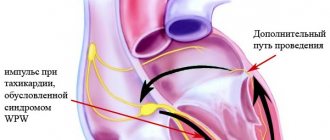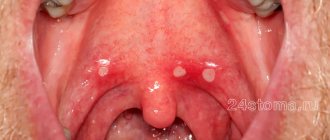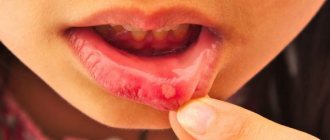Victor Borisovich, when does the danger of enterovirus infection most often arise?
Today, enterovirus infection is one of the most pressing infectious problems in St. Petersburg.
The incidence rate increases in summer and autumn, when it is warm enough outside. The infection is relevant primarily for children. It is most often transmitted by water and airborne droplets. And very often, both adults and children bring the infection from the southern regions. Many remember the outbreak in Turkey last year, and in St. Petersburg there are still isolated cases of infection to this day.
Very often problems arise with differential diagnosis. We must understand that the group of enteroviruses is very large; it includes many enteroviruses themselves, viruses of the ECHO group and the Coxsackie group. Often these three types of viruses can cause an infectious disease in combination. Because of this, there is no specific form of the disease that manifests itself in the same way in everyone; the symptoms are mixed.
Coxsackie virus: calm, only calm
The news of an outbreak of infection with this virus shook up the ranks of vacationers in hot countries and their compatriots spending the summer at Russian resorts. Citizens frightened by the “epidemic” are hastily looking for a panacea, and those who have a vacation ahead of them, in a panic, decide to completely abandon the tours to the coast purchased in advance. And if you cool down and calmly figure out what kind of virus this is with the mysterious name Coxsackie and what disease does it cause?
Who is Coxsackie?
These enteroviruses were discovered by chance in 1949, when American scientist Gilbert Dalldroff was testing the feces of polio patients to create a cure or vaccine. The attempt to create a cure for polio failed, but Dalldroff went down in history as the discoverer of enteroviruses, to which he gave the name Coxsackie - after the small town on the Hudson River, from where the scientist received the first samples of material for research.
Despite the rather exotic sounding name, Coxsackie viruses do not represent anything extraordinary. These are common enteroviruses that thrive in the human gastrointestinal tract. They are distributed throughout the world, their activity depends on the season and climate.
What forms of enterovirus are there? Is it possible to determine them yourself?
Today, the most common clinical forms are:
- "Minor illness" Accompanied by high fever and moderate muscle pain.
- Epidemic polymyalgia. On the contrary, the temperature rises slightly, but muscle aches are pronounced, especially in large muscle masses - in the calf muscles, thigh muscles, lower back and anterior abdominal wall.
- A more striking form is herpangina. It is often confused with bacterial sore throat, and people begin to treat themselves and their children with antibiotics, which only worsens the situation. Although this is a herpetic sore throat, it is still caused by enteroviruses. The fact is that with herpetic diseases there are vesicular (vesicle - a small transparent bubble) rashes in the oropharynx, but they also happen with enteroviruses. Since previously it was not possible to find out the etiology of this disease, it was believed that these were not enteroviruses, but herpetic diseases. Subsequently, enteroviruses were isolated separately, but the name was left the same. Herpangina is a disease that is caused by enteroviruses, and the main clinical manifestations of which are: fever, sore throat and specific rashes on the anterior palatine arches, tonsils, soft palate and posterior wall of the oropharynx.
- The most common clinical form in St. Petersburg is a disease of the “hand-foot-mouth” type. There may be a fairly high temperature, sore throat, rash. But the main difference is a vesicular rash over the body. The rash is usually not abundant - single blisters are found on the arms, legs, torso, abdomen and back. Its main difference from rubella or chickenpox is the appearance of a rash on the palms and soles, which never occurs with chickenpox and rubella. This is one of the main diagnostic signs that allow you to detect enterovirus.
Often, muscle aches are added to the described manifestations, which is why the disease is initially confused with the flu.
Routes of transmission of the virus
Virus transmission occurs:
- respiratory route,
- fecal-oral route,
- through contact and everyday life,
- vertically (from mother to child during pregnancy and childbirth).
Viral particles are released into the environment through breathing, saliva, and defecation in feces.
If the rules of personal hygiene are not observed sufficiently, infection can occur very easily. This explains the widespread spread of infection in crowded groups - kindergartens, summer camps, on hotel grounds (especially in swimming pools). Playing with shared toys, licking them, or putting unwashed hands in their mouths is common among young children. And few preschoolers know how to wash their hands correctly: long enough and washing out all the creases between the fingers and under the nails.
The virus is highly contagious, meaning that a small amount of viral particles enters the body for the disease to develop.
What treatment is there?
To date, there is no specific therapy for each enterovirus in the world. General antiviral treatment includes interferon-type drugs. These drugs do not stimulate one’s own immunity, but introduce ready-made interferon into the body, in particular interferon Alpha 2B, which has moderate antiviral activity not only against enteroviruses, but also against many other infections.
Interferon inducers that stimulate the immune system should be used strictly under the supervision of a physician, since their effect on the body is quite complex, and the doctor must take into account various factors before prescribing them.
Treatment for manifestations of enterovirus infection will vary depending on the symptoms. If the patient has a high fever and muscle pain, then non-steroidal anti-inflammatory drugs are prescribed. For fever, this is paracetamol, anti-inflammatory - ibuprofen, for sore throat and herpangina - local antiseptic solutions.
Enteroviruses infect the small intestine, as their name suggests, because “entero” is translated from Latin as “small intestine.” If abdominal pain and stool disorders appear, sorbents and probiotics are used, sometimes enzymes, depending on the nature of the digestive disorders.
Treatment of enteroviral infections
As in the vast majority of viral infections, it is symptomatic, since no specific therapy has been developed.
The main problem is related to pain when swallowing. Children may refuse not only to eat, but also to drink, which ultimately leads to dehydration. Therefore, it is important to provide high-quality pain relief and ensure sufficient fluid intake.
For pain relief in children, the same medications can be used as for reducing fever - drugs based on ibuprofen and paracetamol. The dosage should be calculated by the doctor depending on the weight of the child and the form of release of the particular drug.
Let me remind you that Aspirin is contraindicated for children due to the risk of side effects (for example, Reye's syndrome - acute liver failure and encephalopathy - a serious, life-threatening condition). Since pain prevents children from eating and drinking, medications must be taken on time - every 6-8 hours, i.e. without waiting for the next rise in temperature.
For drinking, it is better to offer chilled drinks. This is very unusual for our mentality, and it can be difficult to convince parents that cold drinking does not aggravate the disease and does not increase the risk of complications. You can also offer your child melted ice cream - in addition to drinking, this is also at least some kind of food. These recommendations are not someone’s personal invention; they are prescribed in all modern guidelines for the treatment of enteroviral diseases.
Despite the measures taken, regular food will most likely cause discomfort. Offer pureed, non-irritating foods (not sour, not spicy, not hot), milkshakes, sweet yoghurts. In addition, special nutrient-fortified drinks can be found on the baby food market. One glass of such a medicinal mixture replaces a full meal and can significantly help a child during the most difficult period.
Keep in mind that drinking from a mug or straw is easier than drinking from a bottle with a nipple (due to the biomechanics of sucking). Some children are afraid to drink on their own if it has already been painful, but agree to drink from a syringe (without a needle, for example, there is a measuring syringe in each bottle of antipyretic syrup).
Create a short algorithm for the treatment of enteroviruses
If we describe the treatment tactics briefly, then:
- First, we determine that it is a viral infection and not a bacterial one - this is the key to successful treatment. At the slightest doubt, consult a doctor.
- We focus on the manifestations of the disease and determine the clinical form.
- We treat with interferon drugs and symptomatic medications.
We must not forget that the disease progresses differently in different people, and sometimes even a doctor finds it difficult to determine one or another clinical form. Therefore, it is important not to trust self-medication, but to contact a specialist in time, who can carry out the necessary tests and procedures, and get the patient back on his feet.
Causes of hand-foot-mouth syndrome
Hand-foot-mouth syndrome is caused by viruses belonging to the genus (group) of enteroviruses, which include polioviruses, coxsackieviruses, echoviruses and other enteroviruses:
- Coxsackievirus A16 is generally the most common cause of hand-foot-mouth syndrome, but other coxsackieviruses can also cause the disease.
- Enterovirus 71 has also been associated with cases and outbreaks, primarily in children in East and Southeast Asia. Less commonly, enterovirus 71 is associated with severe illness such as encephalitis.
Several types of enteroviruses can be identified in outbreaks, but in most cases only one or two enteroviruses are detected.
Virus transmission
Viruses that cause hand-foot-mouth syndrome can be found in an infected person in:
- secretions from the nose and throat (saliva, phlegm or nasal mucus);
- callus fluid;
- feces.
You can be exposed to viruses that cause illness through:
- close personal contact, such as hugging an infected person;
- air when an infected person coughs or sneezes;
- contact with feces, for example by changing the diapers of an infected person, then touching your eyes, nose or mouth with unwashed hands;
- contact with contaminated objects and surfaces, such as touching a doorknob that contains viruses, then touching your eyes, mouth, or nose with unwashed hands.
It is also possible to become infected with viruses that cause illness if you ingest recreational water, such as pool water. However, this is not very common. This can happen if the water is not properly treated with chlorine and is contaminated with excrement from someone with hand-foot-mouth syndrome.
Typically, a person with the disease is most contagious during the first week of illness. Sometimes people can be contagious for several days or weeks after their symptoms disappear. Some people, especially adults, may become infected and not show any symptoms, but they can still spread the virus to others. This is why people should always try to maintain good hygiene, such as washing their hands frequently, to minimize the chance of spreading or contracting infections.
The patient should stay home while sick. You should talk to your doctor if you are unsure when you should return to work or school. The same applies to children attending kindergartens.
Hand-foot-mouth disease is not transmitted to or from pets or other animals.
Diagnostics
Hand-foot-mouth syndrome is one of many infections that cause mouth ulcers. Health care providers can usually identify mouth ulcers caused by a medical condition by considering:
- how old is the patient;
- what are the patient's symptoms?
- what rashes and mouth ulcers look like.
If the doctor or pediatrician is not sure that a person has the disease, other tests may need to be done.
These may include:
- microflora smear.
- analysis of a stool sample.
These samples will be sent to a laboratory for testing.
Treatment of hand-foot-mouth syndrome
Treatment depends on the period of the disease, the severity of general and local manifestations, which must be carried out from the first days of the disease in order to relieve and prevent severe forms.
Hand-foot-mouth syndrome is treated comprehensively; therapy may involve: a dentist, pediatrician or infectious disease specialist, in accordance with the complexity of the disease and taking into account the patient’s age. After examining the patient and assessing the course of the disease, the doctor will prescribe adequate treatment, preventing the development of complications. Treatment of the disease is aimed at healing existing ulcers and the appearance of new ones.
You can speed up the healing process of tissue damaged by the disease and alleviate symptoms:
- painkillers (lidocaine, hexaral);
- anti-inflammatory (halisal, miramistin);
- antiseptic (treating affected areas with furatsilin, iodinol, chamomile solution);
- antiviral drugs (oxolinic ointment, Zavirax, acyclovir);
- antihistamines (finistil, zodak, suprastin);
- accelerates the regeneration process - carotoline, sea buckthorn oil.
Drug treatment must be combined with diet. Sour, spicy, salty and hot foods should be excluded from the diet. You should not give cookies, crackers, bagels and other foods that injure the oral mucosa.
Nutrition should be balanced and contain all the necessary nutrients and vitamins that are beneficial for the body. If you follow all the doctor’s recommendations and treat the syndrome according to his instructions, the disease will recede very soon.











